Prodeinotherium
Prodeinotherium was a genus of Proboscidean that existed during the late Miocene. It belongs to the Family Deinotheridae which is made of Proboscideans with downward facing tusks. The species found in Kenya is Prodeinotherium hobleyi which was the first species of Prodeinotherium, and it migrated into Asia and Europe before evolving into Prodeinotherium pentapotamiae (in Asia) and then Prodeinotherium bavaricum (In Europe)
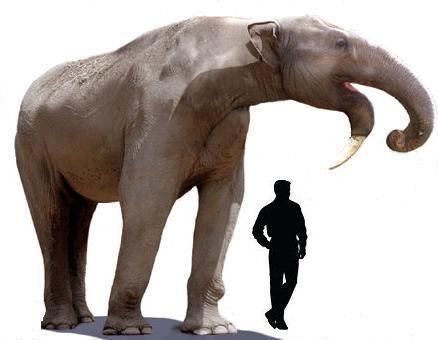
All Deinotheridae were large, at 2.5m to 2.8m tall and weighing 3 to 4 tonnes.All had downward curving tusks. Prodeinotherium hobleyi was found on the Wayondo formation on Rusinga island.
Archaeobelodon
Archaeobelodon was a genus of Proboscidean belonging to the Family Gomphotheriidae. It is an ancestor of Platybelodon and Amebelodon
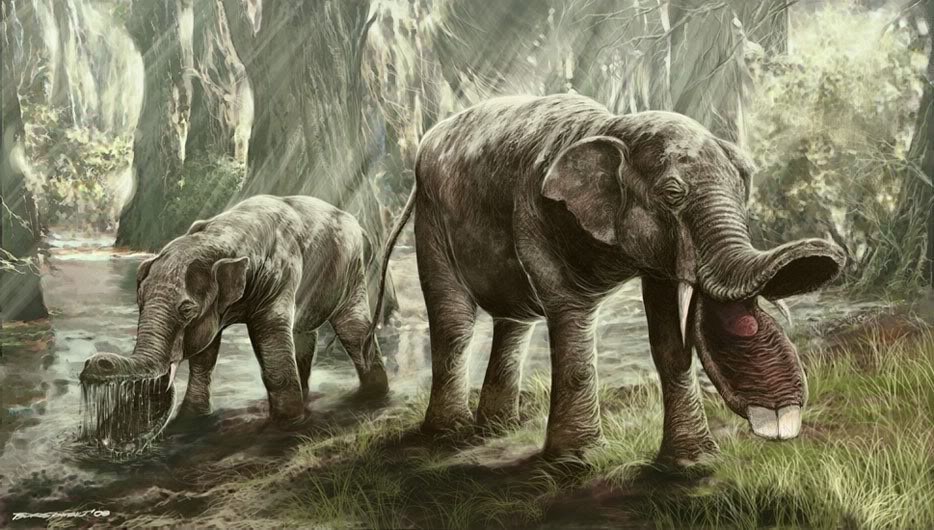
Courtesy of atozanimals.net
The only known species is Archaeobelodon Filholi. Its remains have been found on the Wayondo formation on Rusinga island.
Afrochoerodon
Afrochoerodon was a genus of proboscidean that existed during the Miocene. It belongs to the family Gomphotheriidae
The species whose remains were found in Kenya is Afrochoerodon Kisumuensis. It was found on the Muruyur formation (Tugen Hills, Baringo county) and on the Maboko formation on Maboko island in Kisumu county.
Choerolophodon
Choerolophodon is a genus of proboscidean that existed during the Miocene. It belongs to the family Gomphotheriidae
The species whose remains were found in Kenya is Choerolophodon Kisumuensis. It was found on Maboko formation on Maboko island in Kisumu county.
Eozygodon
Eozygodon was a genus of proboscidean belonging to the family Mammutidae. The species found in Kenya is Eozygodon morotoensia. Its remains were found in Koru, Kisumu county.
Kenyapotamus
Kenyapotamus is considered to be a possible ancestor to modern Hippopotamus. A number of different species have been found in Kenya including Kenyapotamus Coryndae which was found in the Nakali formation (Turkana county) and Kenyapotamus Ternani, which was found at Fort Ternan in Kericho county

Brachyodus
Brachyodus was a genus of hippo like herbivore. It belongs to the family Anthracotheriidae. Modern Hippos may have evolved from Anthracotheres. The species found in Kenya is Brachyodus equatorialis. Its remains were found in Koru, Kisumu county.
Hyoboops
Hyoboops was a genus of herbivore belong to the Anthracotheriidae family. The species found in Kenya is Hyoboops Africanus. Its remains have been found on the Kulu formation on Rusinga island.
Nguruwe Kijivium
Nguruwe Kijivium was a pg like herbivore belonging to the Order Suidae. Its remains were found in Koru, Kisumu county and on Rusinga island.
Chalicotherium
Chalicotherium was a genus of ungulates that belongs to the family Chalicotherioidea and order Perissodactyla. It existed during the Oligocene, Pliocene and Miocene periods. It was odd looking with clawed forelimbs and much longer and more powerful hind limbs.It had the body of a sloth and the head of horse. It was a massive animal, standing 2.6 metres at the shoulder. Chalicotherium used its hind legs to support its weight while feeding. The forelegs were used for feeding. To protect its claws, Chalicotherium walked on its knuckles.
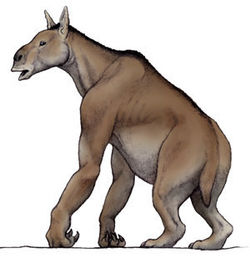
The species that was found in Kenya is Chalicotherium Rusingense. Its fossil remains were found on the Kulu formation of Rusinga island and on Mfangano Island.
Rusingaceros
Rusingaceros is known as the oldest known modern Rhinocerous that existed during the Miocene. It consists of only one species: Rusingaceros Leakeyi, that was previously known as Dicerorhinus Leakeyi. It belongs to the family Rhinocerotidae and order Perissodactyla. Its fossil remains have been found on Rusinga island as well as Maboko Island.
Aceratherium
Aceratherium was a Genus of hornless Rhinoceros that existed during the Miocene period. It belongs to the Subfamily Aceratheriinae and family Rhinocerotidae. The species that was found in Kenya is Aceratherium Acutirostratum. It has been found on Rusinga Island, Maboko Island and at Karungu in Migori county.
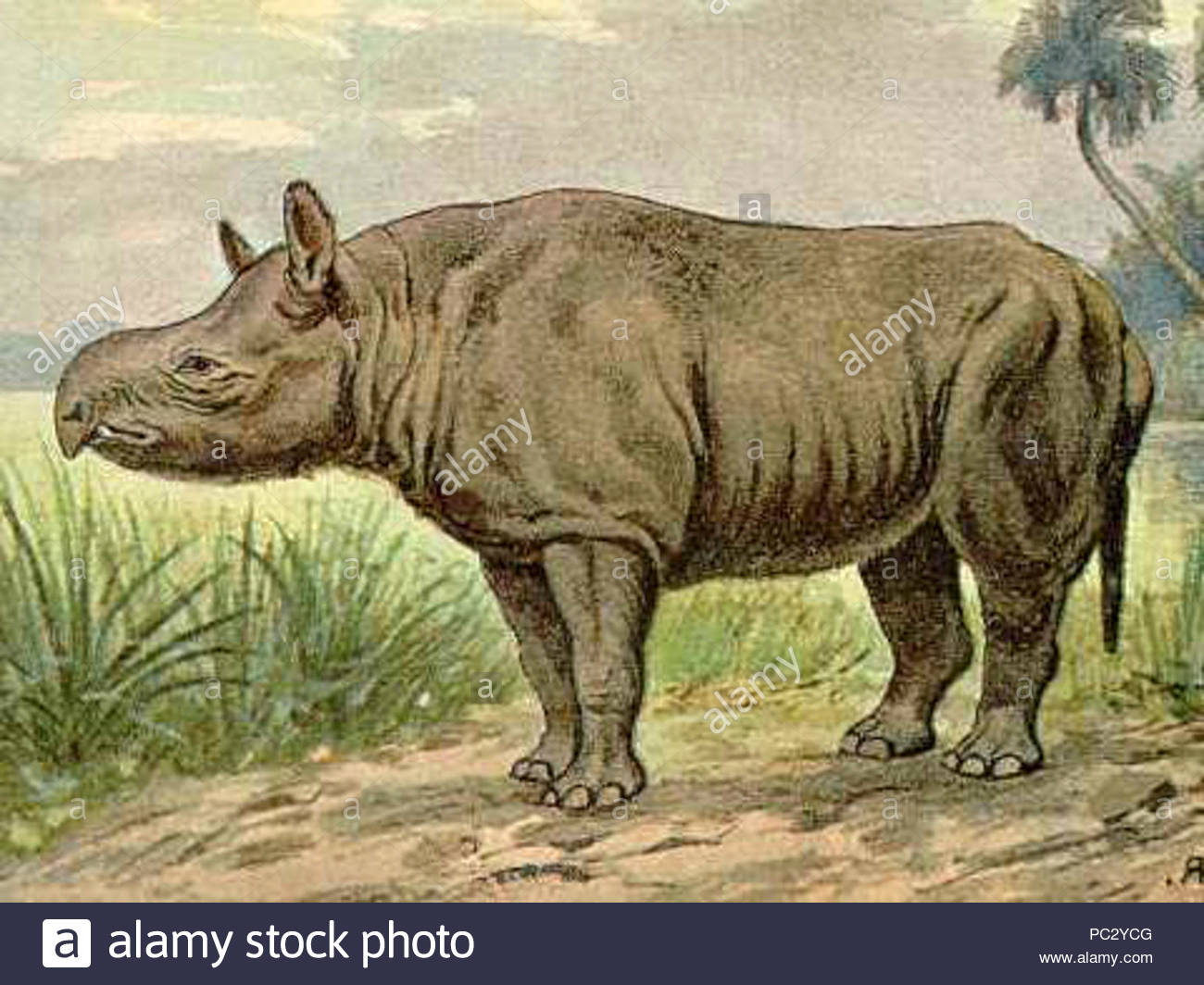
Chilotheridium
Chilotheridium was a genus of Rhinocerotid that existed in the Upper Miocene. It belongs to the family Rhinocerotidae and order Perissodactyla. The species found in Kenya is Chilotheridium pattersoni, Its fossil remains have been found on the Wayondo formation on Rusinga island as well as Namurungule and Nakali Formations, northern Kenya
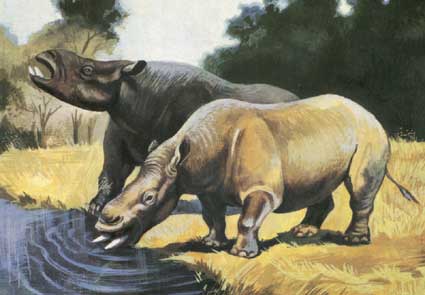
Megalotragus
Megalotragus was a genus of very large extinct African alcelaphines. It existed during the Pliocene to early Holocene It resembled modern hartebeests, but much larger reaching a shoulder height of 1.4 m (4.6 ft). The genus consists of three species of which Megalotragus priscus survived until the early Holocene
Paradiceros
Paradiceros was genus belonging to the subfamily Dicerorhininae of the family Rhinocerotidae. The species found in Kenya is Paradiceros mukirii . Its remains were found in Uyoma, Siaya county.
Rusingoryx
Rusingoryx is a genus of bovid that existed during the Pleistocene. The only known species is Rusingoryx atopocranion. As the name suggests, its remains were found in Rusinga Island. Its is closely related to wilderbeest. It is noted for its pointed nose with a large nasal dome, that was used for vocalization.
Megalohyrax
Megalohyrax is a genus belonging to the family Pliohyracidae and order Hyracoidea. It existed in the lower Oligocene (30 million years ago). The species found in Kenya is Megalohyrax Championi. Its remains have been found in Karungu, Migori County.
Kenyasus
Kenyasus is a genus that existed in the Miocene. It belongs to the family Suidae which includes Pigs, Hogs, Warthogs and other similar animals. The remains of at least three Species have been found in Kenya: Kenyasus kirimunensis which was found at Kipsaraman, Kenyasus namaquensis and Kenyasus Rusingensis which was found on Rusinga island.
Listriodon
Listriodon is a genus that existed in the Miocene. It belongs to the family Suidae which includes Pigs, Hogs, Warthogs and other similar animals. It is characterized by curved upper canines similar to those of a warthog. Its remains have been found at Fort Ternan
Dorcatherium
Dorcatherium is a genus that existed during the Miocene. It belongs to the family Tranguilidae (Chevrotain or Mouse Deer). Fossil remains of this Genus are numerous and have been found all over Europe and Africa. The species whose remains were found in Kenya is Dorcatherium Chappuisi, Dorcatherium piggoti and Dorcatherium Parvum.
Diamantohyus
Diamantohyus is an genus that existed in the Miocene period. It belongs to the family Sanitheriidae. The remains of two species have been found in Kenya: Diamantohyus africanus and Diamantohyus Leuderitzi, which were both found at Karungu in Migori County,
Libycochoerus
Libycochoerus was a genus of long legged pig like animals belonging to the Suidae family which comprises Pigs, Boars and other Pig like animals. The species found in Kenya include Libycochoerus Jeannelli whose fossil remains were found on the Wayondo formation on Rusinga Island, Libycochoerus massai from the Tugen hills
Orycteropus
Orycteropus was a genus of the order Tubulidentata which includes modern Aardvarks. It existed during the late miocene. The species found in Kenya is Orycteropus Africanus. Its remains have been found in the Wayondo formation on Rusinga Island.
Propalaeoryx
Propalaeoryx was a genus of herbivore that existed during the Miocene. It is closely related to Giraffids. The species found in Kenya are Propalaeoryx Climacoceras, Propalaeoryx Prolibytherium and Propalaeoryx Nyanzae. Remains have been found at Fort Ternam and on Rusinga island. Climacoceras had long horns and two prongs.
Canthumeryx
Canthumeryx was a genus of Giraffid. It is considered an ancestor of modern giraffes. It shows evidence of the beginnings of the evolution of the long neck. Its remains were found on the Wayondo formation.
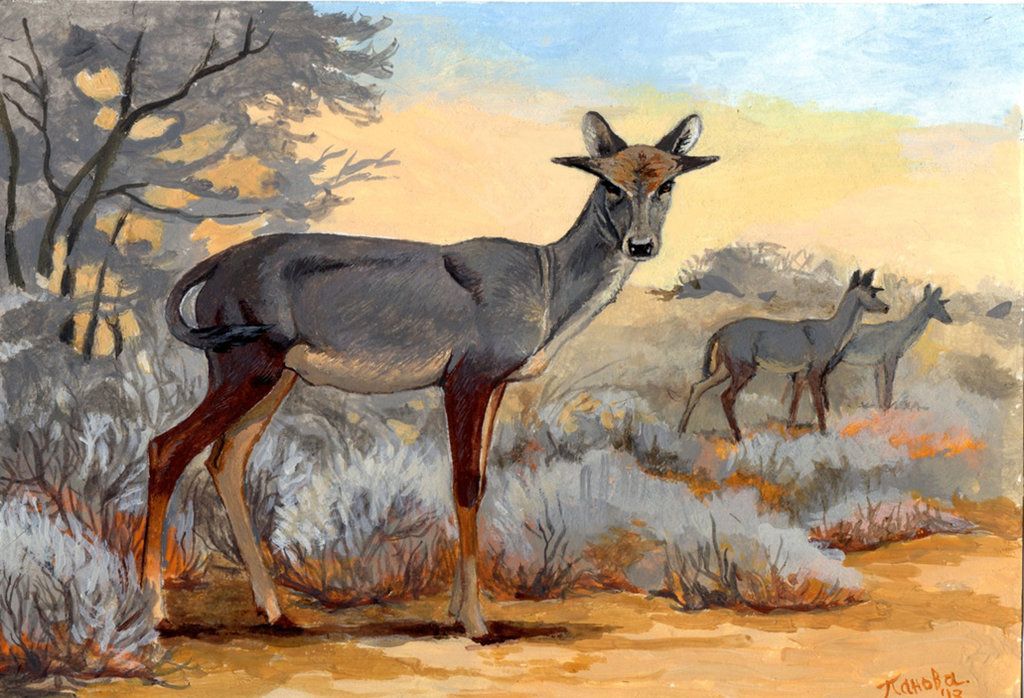
Samotherium
Samotherium was a genus of herbivore that belonged to the family Giraffidae. Like modern giraffes, it had two ossicones on its head. It appears to be transitioning towards having a long neck. It existed during the Miocene. The species found in Kenya is Samotherium Primaevus. Its remains have been found in Uyoma, Siaya county.
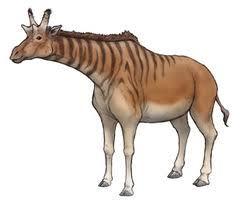
Protragocerus
Protragocerus is a genus of antelope that existed during the Miocene. It belongs to the the tribe Boselaphini, subfamily Bovinae of the family Bovidae. The species found in Kenya is Protragocerus Labidotus. It was found in Uyoma, Siaya county.
Caprotragoides
Caprotragoides was a genus belonging to the tribe Caprini, subfamily Caprinae and family Bovidae. It existed in the Miocene period. The species found in Kenya is Caprotragoides Gentryi.
Walangania
Walangania is a genus of herbivore that existed during the Miocene. Its exact classification is not known. There is no consensus on whether it belongs to the Order Bovidae (Cattle-like) or the Order Cervidae (Deer). The species found in Kenya is Walangania Africanus. Its remains were found on the Kulu formation on Rusinga island.
Mammuthus Subplanifrons (previously Loxodonta Adaurora)
Mammuthus subplanifrons, is also known as the South African Mammoth. It is the oldest representative of the genus Mammuthus. It appears in the fossil record around 5 million years ago during the early Pliocene in what is today South Africa, Kenya and Ethiopia. They presented some unique characteristics of mammoths like the spirally, twisting tusks. It was 3.68 metres (12.1 ft) tall at the shoulder and weighed about 9 tonnes.
A complete skeleton was found in Kanapoi, Kenya. It was initially classified as Loxodonta adaurora. In 2009, it was shown that Loxodonta adaurora is indistinguishable from Mammuthus subplanifrons. The continuously decreasing length of vertebral spines from shoulder to hip and the extreme femur to tibia ratio indicate that this species belongs to Mammuthus, not Loxodonta (Loxodonta spp. have high vertebral spines over the hips, the mid-back having the lowest), and since Mammuthus subplanifrons was named first, that would be the valid name for the species.
Back to Kenya History Page |
